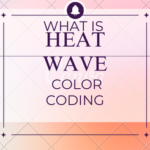Indian Railways KAVACH system: Basics Explained

The Railway Board in a statement said that Indian Railways has approved works of KAVACH on more than 34,000-km route on high density and highly utilised networks, after the deployment of the indigenous Automatic Train Protection and Warning (ATP) system to enhance safety of trains over 1,400 km of the South Central Railway Zone.
LEARNING FROM HOME/ WITHOUT CLASSES/ BASICS
To prevent accidents due to human error resulting in “signal passing at danger” and “over speeding”, the Indian Railways has developed indigenous ATP System, known as KAVACH.
This is achieved by automatic application of brakes whenever the train speed exceeds safety limits. KAVACH also helps in running trains during inclement weather such as dense fog when visibility of the signals is hampered.
KAVACH is designed to have continuous update of movement authority and for prevention of speeding, collision between two locos equipped with functional Train
Collision Avoidance System (TCAS) and Signal Passing At Danger (SPAD). It also enables display of signal aspect in the loco pilot’s cab.
It is a set of electronic devices and Radio Frequency Identification devices installed in locomotives, in the signalling system as well the tracks, that talk to each other using ultra high radio frequencies to control the brakes of trains and also alert drivers, all based on the logic programmed into them.
The salient features of the said Kavach system are as under-
-
- Kavach controls speed of the train by automatic application of brakes in case Loco Pilot fails to apply the brakes.
- Repeats line-side signal in cab which is very useful for higher speeds and foggy weather.
- Works on principle of continuous update of Movement authority.
- Auto whistling at LC gates.
- Collision avoidance by direct loco to loco communication.
- Supports feature of SOS in case of any mishap to control train in vicinity.
Electromagnetic Radiation:
· Energy radiated in the form of a wave as a result of the motion of electric charges. A moving charge gives rise to a magnetic field, and if the motion is changing (accelerated), then the magnetic field varies and in turn produces an electric field. These interacting electric and magnetic fields are at right angles to one another and also to the direction of propagation of the energy. Thus, an electromagnetic wave is a transverse wave.
· The theory of electromagnetic radiation was developed by James Clerk Maxwell and published in 1865. He showed that the speed of propagation of electromagnetic radiation should be identical with that of light, about 186,000 mi (300,000 km) per sec. Subsequent experiments by Heinrich Hertz verified Maxwell’s prediction through the discovery of radio waves, also known as hertzian waves.
· Light is a type of electromagnetic radiation, occupying only a small portion of the possible spectrum of this energy. The various types of electromagnetic radiation differ only in wavelength and frequency; they are alike in all other respects. In order of decreasing wavelength and increasing frequency, various types of electromagnetic radiation include: electric waves, radio waves (including AM, FM, TV, and shortwaves), microwaves, infrared radiation, visible light, ultraviolet radiation, X rays, and gamma radiation.






0 Comments